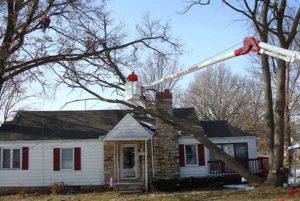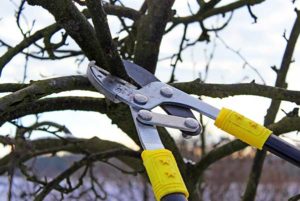Why You Should or Shouldn’t Prune Your Trees
Pruning trees in your yard or landscape is an integral part of maintaining their health and a critical aspect of landscape maintenance. When done correctly, either as a do-it-yourself project or by hiring a tree pruning service company, a well-pruned tree is healthier and more robust than a neglected tree. The key to pruning is knowing when you should or shouldn’t prune, and the actions involved.
Always Have an Objective Before Pruning
It’s vital that you don’t go out into your yard and prune only because you want to shape or cut something down. When pruning, it’s necessary for your subject to have an underlying need for pruning, like curtailing growth or medical needs.
Other credible concerns for pruning are:
Your tree has diseased branches that need to be removed. Since some fungal and bacterial problems cannot be treated, the best course of action is to prune out the diseased parts to prevent them from spreading through the entire tree.
- Your tree needs shaping for aesthetic purposes.
- Your tree is outgrowing its space and needs to be kept at a manageable size.
- Your tree must have branches and limbs pruned back to promote flower and fruit production. Pruning fruit trees encourages the growth of spurs, the part of a tree that produces fruit.
- Your tree has become a safety hazard. If it has dead branches that overhang your house or electrical wires, heavy weather could make them fall, and potentially cause great damage.
When Should You Avoid Pruning?
There are some times when it is recommended to avoid pruning.
As a good rule of thumb, try to avoid pruning when it’s raining or wet, as the moisture can make your tree more susceptible to infection through the pruning cuts.
- Be advised that pruning in late fall may trigger new growth, which may not have enough time to harden against winter conditions. This could also prevent them from entering dormancy in preparation for winter. While these effects are not guaranteed in the fall or winter, and some pruning may be required for aesthetic or health situations.
- General guidelines say that pruning in the late summer can place undue stress on any plant, but if pruning is seriously required, by all means break these guidelines.
- If you are uncertain about when pruning is or is not appropriate, consider calling a professional for an evaluation or to take care of the work for you. RYAN offers a wide range of pruning and arboreal care services at all times of the year, and will treat your plants like their own.
The only exception to these don’ts are any heavily diseased, damaged or dead branches, as they always present an overall danger for the entire tree. However, you shouldn’t prune this wood during wet weather.
Does Pruning Negatively Affect Trees?
Remember that pruning affects a tree’s overall health, so you have to be extremely careful about how much and how you prune. The last thing you want to do is cause irreparable damage.
Your tree is a living, breathing organism that uses its foliage to create energy for growth. Removing leaves by pruning reduces photosynthesis and in turn, reduces growth and stored energy reserves. If a young sapling is heavily pruned, it will have less energy available to create a healthy root system.
Pruning is also stressful on the tree. This stress can slow healthy growth and, if there is a significant amount of branches in need of pruning, keeps the pruning wounds from healing properly. Stress also lowers the tree’s natural defenses against pathogens and other microorganisms, which attack the exposed vascular tissue.
Always Remember the 1/3 and 1/4 Rule when Pruning
For the tree’s health, you need to keep in mind the 1/3 and 1/4 Rules when removing live branches.
The 1/3 Rule states that the side branches on a tree should have a diameter at least one-third smaller than the tree’s trunk. Once branches become too large, they use significant energy but give very little back to the tree’s growth, so it’s best to take them off.
This rule also applies to how limbs perform best on the tree. You want the branches to be a third (about 33°) away from their trunk, or shoot up at the “ten and two o’clock” positions.
Never go up above 1/3 of the tree’s height when pruning branches off of the main trunk..
The 1/4 Rule dictates the maximum amount of foliage you can remove in a single season—you should never remove more than 25% of the tree. Any more would cause the root system undue stress. It can also lead to water sprout growth, which is structurally unsound.
Under certain circumstances, even 25% is too much material to remove..
- When absolutely necessary, young trees still in their growth phase may have up to 25% removed, given they don’t have any stressors or growth limiting factors.
- Mature trees without stress or limiting growth factors should only have up to 20% of their foliage removed.
If your tree needs heavier pruning, spread it out over a few seasons.
The Dos and Don’ts of Pruning Cuts
There are also specifics to keep in mind when it comes to the actual cuts, which need to be made correctly to minimize damage to the tree.
When making cuts:
Try to make your cuts in one motion with the pruners. You want your cuts to be clean and smooth, not ragged.
- Avoid tearing the bark, especially when removing large branches.
- Make cuts about ¼” above a node, which is the point where a branch or twig comes together.
- Always make cuts at a 45° angle to the lateral line of the branch being cut. This angle creates the ideal tissue exposure for healing. Less than this doesn’t have enough tissue, and greater than 45° exposes too much material to heal quickly.
- Do not make flush cuts or cuts that are made flat against the trunk or main branch. These cuts destroy the tree’s natural mechanisms that promote callus formation, healing the wounds.
- Always make your cut just past the branch collar and branch bark ridge.
- Never leave a stub without any branches. This area is typically where dieback occurs.
Contact a Professional for Tree Pruning Service
We would love to help you keep your trees properly trimmed. Contact us today for a Free Estimate and let us help you with your tree pruning needs by a RYAN tree care expert!

 Your tree has diseased branches that need to be removed. Since some fungal and bacterial problems cannot be treated, the best course of action is to prune out the diseased parts to prevent them from spreading through the entire tree.
Your tree has diseased branches that need to be removed. Since some fungal and bacterial problems cannot be treated, the best course of action is to prune out the diseased parts to prevent them from spreading through the entire tree. As a good rule of thumb, try to avoid pruning when it’s raining or wet, as the moisture can make your tree more susceptible to infection through the pruning cuts.
As a good rule of thumb, try to avoid pruning when it’s raining or wet, as the moisture can make your tree more susceptible to infection through the pruning cuts. Try to make your cuts in one motion with the pruners. You want your cuts to be clean and smooth, not ragged.
Try to make your cuts in one motion with the pruners. You want your cuts to be clean and smooth, not ragged.







